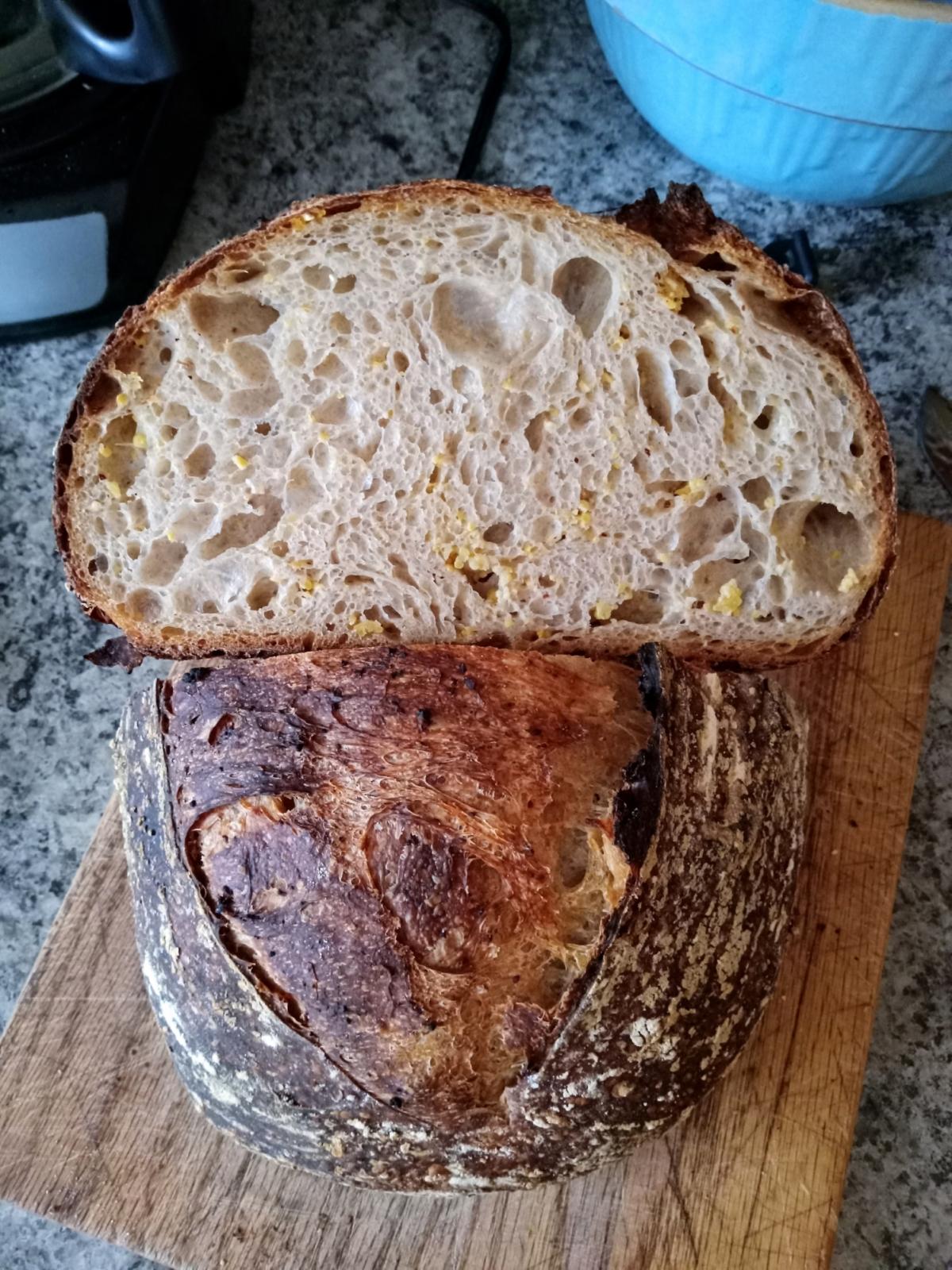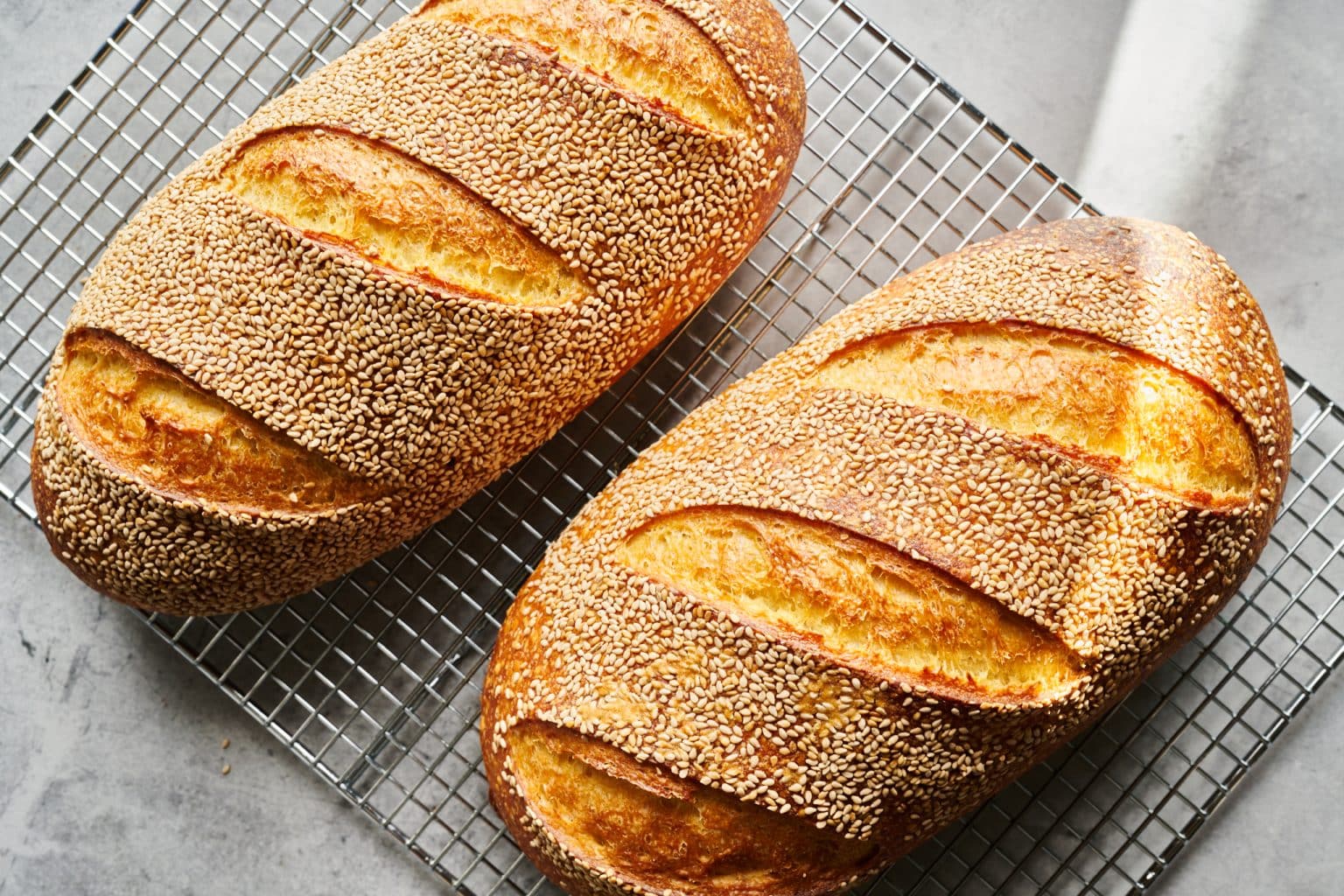I have not baked a porridge bread in a while and it was time to try a new one. I love the malty flavor adding Guinness to bread imparts. I decided to use some of the Harvest Grain mix I had purchased during my last trip to King Arthur Flour in Vermont. It’s a mix of whole oat berries, millet, rye flakes, and wheat flakes and four seeds (flax, poppy, sesame, and sunflower).
I made the porridge with the Harvest Grain mix and added some yogurt in place of some of the water to add some additional creaminess to the dough.
I used some KAF bread flour and some fresh milled and high extraction whole wheat and green corn flour.
I was quite please with the final bread. It had a nice malty flavor with a moist and crunchy crumb from the porridge.


Levain Directions
Mix all the levain ingredients together for about 1 minute and cover with plastic wrap. Let it sit at room temperature for around 7-8 hours or until the starter has doubled. You can use it immediately in the final dough or let it sit in your refrigerator overnight.
Porridge Directions
Add about 3/4’s of the water called for in the porridge to the dry ingredients in a small pot set to low and stir constantly until all the liquid is absorbed. Add the remainder of the water and the yogurt and keep stirring until you have a nice creamy and soft porridge. Remove from the heat and let it come to room temperature before adding to the dough. I put mine in the refrigerator and let it cool quicker.

Main Dough Procedure
Mix the flours and the Guinness for about 1 minute. Let the rough dough sit for about 20 minutes to an hour. Next add the levain, cooled porridge, and salt and mix on low for 4minutes. (Note: If you are using the Ankarsrum mixer like I do, add your Guinness to the bowl first then add in the flours). After your autolyse add in the salt, remaining water and mix on low to medium low for 15-20 minutes. Remove the dough from your bowl and place it in a lightly oiled bowl or work surface and do several stretch and folds. Let it rest covered for 10-15 minutes and then do another stretch and fold. Let it rest another 10-15 minutes and do one additional stretch and fold. After a total of 2 hours place your covered bowl in the refrigerator and let it rest for 12 to 24 hours. (Since I used my proofer I only let the dough sit out for 1.5 hours before refrigerating).
When you are ready to bake remove the bowl from the refrigerator and let it set out at room temperature still covered for 1.5 to 2 hours. Remove the dough and shape as desired.
The dough will take 1.5 to 2 hours depending on your room temperature and will only rise about 1/3 it’s size at most. Let the dough dictate when it is read to bake not the clock.
Around 45 minutes before ready to bake, pre-heat your oven to 545 degrees F. and prepare it for steam. I have a heavy-duty baking pan on the bottom rack of my oven with 1 baking stone on above the pan and one on the top shelf. I pour 1 cup of boiling water in the pan right after I place the dough in the oven.
Right before you are ready to put them in the oven, score as desired and then add 1 cup of boiling water to your steam pan or follow your own steam procedure.
Lower the temperature to 450 degrees. Bake for 35-50 minutes until the crust is nice and brown and the internal temperature of the bread is 205 degrees.
Take the bread out of the oven when done and let it cool on a bakers rack for at least 2 hours before eating.















 BURNETTdlFeb 13 2023 - 3:52pm
BURNETTdlFeb 13 2023 - 3:52pm







